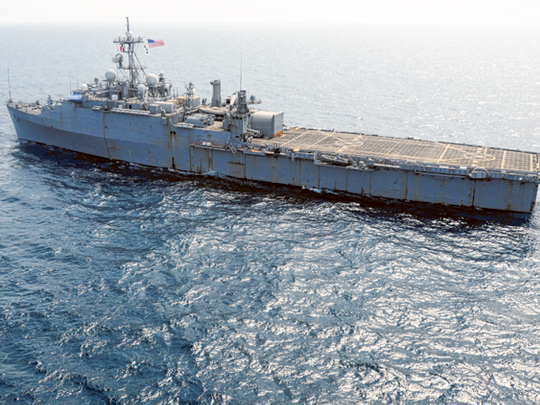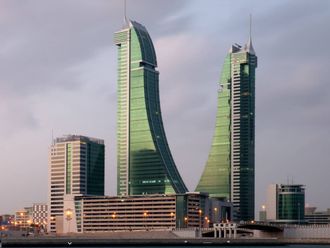
Washington: The Navy plans to install a laser weapon prototype on a ship this summer for at-sea testing in the Arabian Gulf.
The technology, called the Laser Weapon System, will be the first of its kind to be deployed, the Navy said.
The idea is that the laser could zap dangerous swarming small boats and flying drones while on the USS Ponce in the Arabian Gulf. Its power also can be scaled down, presenting the Navy a non-lethal alternative to ward off threats such as pirates, terrorists and smugglers.
“This is a revolutionary capability,” said Chief of Naval Research Rear Adm. Matthew Klunder in a statement. “It’s absolutely critical that we get this out to sea with our sailors for these trials, because this very affordable technology is going to change the way we fight and save lives.”
It was developed by engineers and scientists from the Navy, defence industry and academia. It involves commercial fibre solid-state lasers and has already successfully shot down flying targets.
Data from the Ponce deployment will guide the development of a Navy programme for combat-ready lasers installed on vessels, such as guided-missile destroyers and the Littoral Combat Ship, by 2016.
The Navy plans to spend $110 million (Dh403.7 million) with Northrop Grumman Corp, BAE Systems Inc. and Raytheon Co. over the next two years for development work on the programme.
The announcement to deploy the laser comes as military researchers continue to try to make progress on directed-energy weapons. In 2012, the Laser Weapon System downed several drones in tests.
In 2011, the Navy had success with another laser system mounted on a warship when it fired and set fire to an empty motorboat as it bobbed in the Pacific Ocean. It was the first time in history the Navy pulled off the feat.
In what was once considered the stuff of science fiction, the development of laser technology has been fraught with setbacks.
Last year, the Missile Defence Agency’s airborne laser program was cancelled after more than 15 years of development and $5 billion in federal funding.
The programme involved a Boeing 747 jumbo jet equipped with an advanced tracking system and a massive laser gun on its nose to identify and obliterate enemy missiles as they blast off. But the program experienced a series of cost overruns and delays. It never went beyond testing.
The Navy’s desired targets with the Laser Weapon System are far smaller and slower.
Following the USS Ponce testing — which comes two years ahead of schedule — Navy and Pentagon officials said they will continue to research ways to integrate affordable laser weapons into the fleet.












